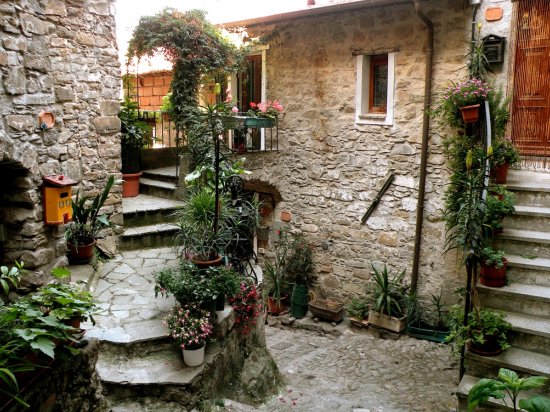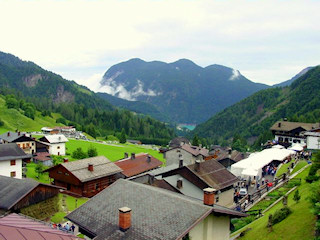A great idea of sustainable tourism in Italy: Albergo Diffuso
Thanks to Giancarlo Dall’Ara for his interesting blog I’ve finally found information about Albergo Diffuso that was already written in English, so after a little modification, I can introduce to you the Albergo Diffuso.

The Italian words Albergo Diffuso can be expressed in English as “horizontal hotel”, “multi-building hotel” or “integrated hotel”. The marketing professor Giancarlo Dall’Ara was the pioneer who set the theoretical basis for the model, by introducing the Albergo Diffuso is a new type of hospitality offered in Italy in the 80s.
He put his idea to the test in 1982 in Carnia, a town in the northern region of Friuli near the Slovenian border. The town was dying after an earthquake in the 70s; however, it began to come back to life once the old historic centre was renovated and turned into a hotel. Since its success, Dall’Ara has seen the fruits of his vision blossom.

Sustainable tourism in Italy was not a topic yet when the term Albergo Diffuso was coined in 1982. The word rapidly spread in the following years, when several attempts were made to implement the model in different areas of Italy such as Sardegna and Friuli Venezia Giulia.
The Albergo Diffuso concept intended to position itself halfway between the idea of a family house and the traditional hotel accommodation, providing a close-knit atmosphere and offering at the same time the essential services expected by conventional hotel accommodation.
This innovative approach offers a hotel’s hospitality and amenities without the sterile uniformity often found in tourist structures. An Albergo Diffuso not only avoids the construction of new (and sometimes ugly) hotels on the outskirts, it takes buildings that have been abandoned and gives them original purpose while keeping their antique appeal.
In short, the goal is to renovate abandoned buildings, revive local artisan crafts, and re-inhabit the town—a tall order, but one that has proven successful. Time and again, old towns experience a kind of metamorphosis when an Albergo Diffuso opens there. According to Dall’Ara, a city sees an immediate and notable effect. “The area lives up: lights are on, tourists start to arrive from other regions and other countries, shopkeepers see a rise in the business, new restaurants open, and residents start to realise that their town has value after all,” he says.

The most critical element characterising the Albergo Diffuso model is the fact that it is perfectly integrated with the local territory and community. In the same fashion, the services and leisure facilities offered to guests are in tune with the local culture and tradition from eno-gastronomic tours to local crafts workshops.
The benefit for tourists is the chance to stay in a historical building, as well as the opportunity to experience a real town’s life. They get a genuine sense of place and the chance to see the city’s lifestyle up-close. The very structure of an Albergo Diffuso encourages travellers to immerse themselves into the village, to interact with neighbours, to absorb the atmosphere of the place, to buy fresh fruit from the local market and enjoy a cappuccino at the nearby coffee bar.
Dall’Ara says that the benefit for the town is a new lease on life, a transformation not only on the village itself but in the minds of the villagers, as they reclaim an appreciation for their cultural identity and the charm their town has to offer.
All told, an Albergo Diffuso is more than a tourist structure and more than a renovation project. In essence, it’s a cultural encounter that enriches the lives of the locals as well as the travellers’, and often forges friendships in the process. It’s more than a hotel stay; it’s a traveller’s immersion into a town’s history and life.
Sara
The sources for this presentation are:
